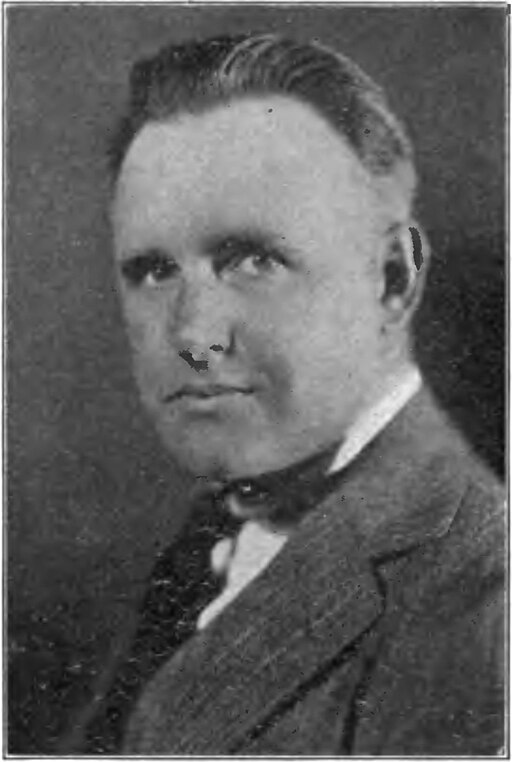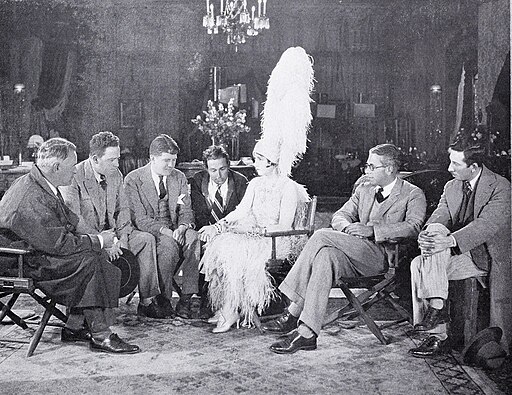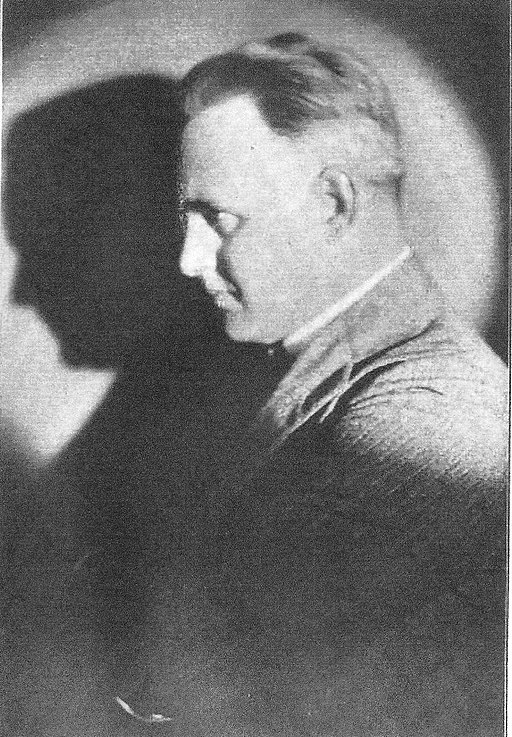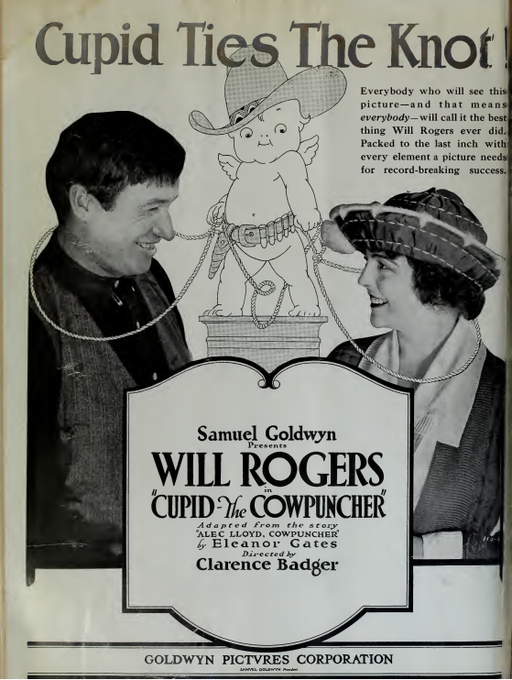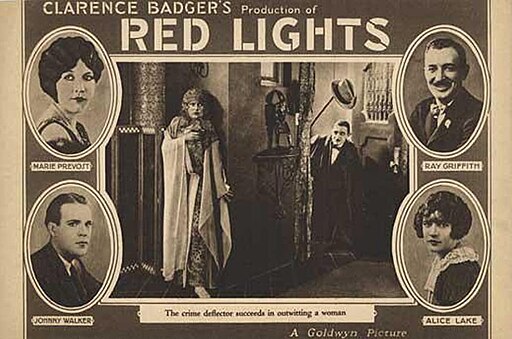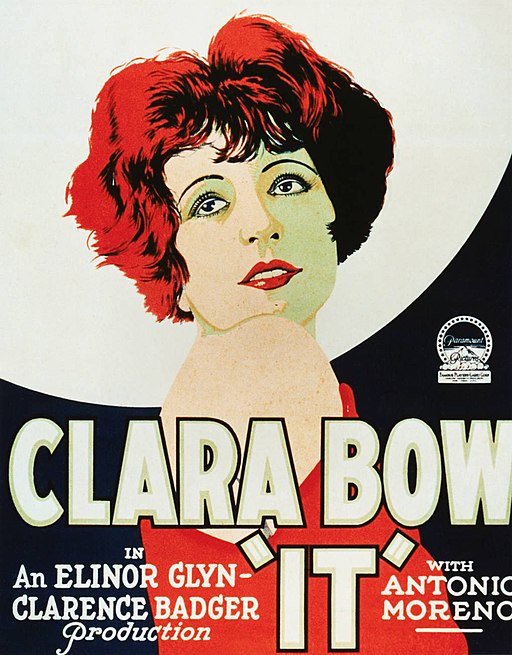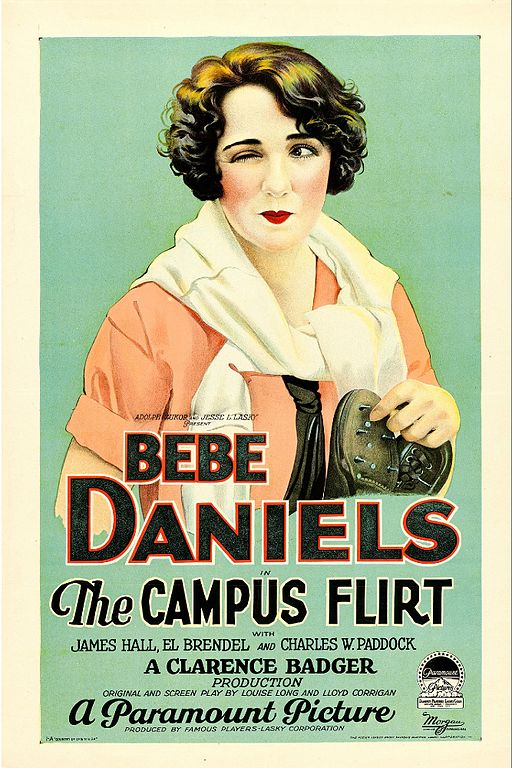Clarence Badger
back| Full Name | Clarence Badger |
| Born | June 9, 1880 |
| Birthplace | San Francisco, California, USA |
| Died | June 17, 1964 |
| Buried | Forest Lawn Memorial Park, Glendale, California, USA |
| Married to | Marjorie Ann |
| Children | Clarence Badger Jr. |
| Notable films | It (1927) - Tha Campus Flirt (1926) - Red Hair (1928) - Polyanna (1920) |
Clarence Badger
The Architect of Whimsy
Clarence Badger's career spanned both the silent and early sound eras of Hollywood. He started directing in the mid-1910s, initially working on short comedies and gradually moving on to feature films.
Throughout his career, Badger worked with many of the era's stars, including Will Rogers and Raymond Griffith. Despite the prominence of his work during the silent era, his transition to sound films was less prolific, and he eventually directed his last film in 1940.
Related
Clarence Badger (1880 – 1964)
Biography and Career Overview
Clarence Badger, a seminal figure in the silent film era, was born on June 9, 1880, in San Francisco, California. His entry into the world of film directing came after a varied early career, showcasing a talent for storytelling and a knack for comedy that would define his contributions to early cinema.
His personal life, particularly his marriage to Marjorie Ann "Margaret" Gibbs, was a testament to the stability sought by many in the tumultuous early days of Hollywood. While specific details about his children are scarce, suggesting either a very private family life or the absence of offspring, it's clear that Badger's life off-screen was less documented than his cinematic achievements.
Badger's directorial debut came in the 1910s, a time when the film industry was burgeoning into the cultural force it would become. He quickly distinguished himself with a flair for comedy, directing short films that capitalized on the silent era's physical humor and timing. His transition to feature films was marked by a series of successful collaborations with some of the era's most iconic stars, such as Clara Bow, with whom he created some of his most memorable works.
The film "It," released in 1927, is perhaps the most emblematic of Badger's oeuvre, a romantic comedy that not only showcased Clara Bow's charismatic screen presence but also contributed to the lexicon of Hollywood by introducing the concept of the "It girl." This film, along with others like "The Campus Flirt" and "Red Hair," underscored Badger's ability to craft narratives that were both engaging and visually compelling, even without the benefit of spoken dialogue.
"Pollyanna" in 1920 demonstrated his versatility, proving that his directorial prowess extended beyond comedy to include heartfelt drama, resonating with audiences and critics alike.
Despite the success, the transition from silent films to talkies proved challenging for many directors of the era, and Badger was no exception. Though he managed to direct a few sound films, his prominence waned as the industry evolved. His last directorial effort came in 1940, marking the end of a career that had significantly influenced the silent film genre.
Clarence Badger passed away on June 17, 1964, and was buried in Forest Lawn Memorial Park in Glendale, California. His legacy, however, endures in the films that remain, a testament to his vision and his contribution to the foundation of American cinema. His work not only entertained but also helped to shape the early narrative and aesthetic of Hollywood, capturing the imagination of audiences and setting a standard for the filmmakers who followed.
Clarence Badger was a master storyteller of the silent screen, whose directorial genius lay in weaving humor and humanity into the fabric of his films. Known as the "Architect of Whimsy," Badger had an uncanny ability to draw out the expressive power of visual comedy, making him one of the silent era's most influential comedic directors. His work was characterized by a delightful blend of slapstick, situational comedy, and character-driven narratives, showcasing his deep understanding of the medium's potential to convey complex emotions and stories without a single spoken word.
"The Danger Girl" by Clarence Badger:
Highlights of Clarence Badger’s Direction Career:
Clarence Badger's career spanned from the mid-1910s through to the early 1940s, with a diverse filmography that reflects the silent film era's creative vibrancy and the early sound era's innovations. Here's a selection of his films, highlighting some of his most significant works by year, along with a brief synopsis for each:
1920s Highlight:
- "Pollyanna" (1920): An adaptation of Eleanor H. Porter's novel, the film stars Mary Pickford as Pollyanna Whittier, a young orphan who goes to live with her wealthy but stern Aunt Polly, bringing joy and a positive attitude to everyone she meets through her game of finding something to be glad about in every situation.
- "The Fast Freight" (1922): A silent comedy showcasing the adventures and misadventures associated with high-speed rail travel, emphasizing physical comedy and situational humor typical of the era.
- "The Dangerous Blonde" (1924): This film follows the story of a young woman navigating the complexities of love and society, marked by Badger's flair for comedic situations and character-driven storytelling.
- "The Campus Flirt" (1926): In this comedy, Clara Bow plays a college girl who uses her charms to win over the heart of a top athlete at a rival school, encapsulating the lively spirit of college life and romantic entanglements.
- "It" (1927): Starring Clara Bow, this film is about a shop girl who possesses a certain indefinable appeal ("It") that draws the attention of the department store owner's wealthy son. "It" became a cultural phenomenon and cemented Clara Bow's status as the quintessential flapper and the "It girl" of the 1920s.
- "Senorita" (1927): A romantic comedy set in Spain and California, featuring a woman who disguises herself as a male bullfighter to save her family's land, blending humor with action and romance.
- "Red Hair" (1928): Another Clara Bow vehicle, this film is about a fiery-haired woman who seeks love and adventure, only to find herself in a series of comedic and romantic situations. Only fragments of "Red Hair" survive today.
Transitioning to Sound Films:
- "Hot Heels" (1928): An early sound film that combines elements of comedy and drama, focusing on the fast-paced world of horse racing and betting.
- "Paris" (1929): A musical comedy representing one of Badger's forays into the burgeoning genre of sound films, showcasing the Parisian life and love affairs of its characters.
Later Works:
- "Her Wedding Night" (1930): A romantic comedy featuring Clara Bow in one of her final film roles, as a woman who experiences a series of mishaps and misunderstandings on her way to the altar.
- "No Limit" (1931): A comedy about a young woman who enters a car race to win back her family's hotel, combining speed, slapstick, and situational comedy.
- "Horse Play" (1933): This comedy revolves around the misadventures of Americans abroad, focusing on a group of tourists in Europe and the comedic situations they find themselves in.
- "Hold That Girl" (1934): A crime comedy where a female reporter goes undercover to expose a gang, only to find herself in a series of amusing predicaments.
Final Films:
- "That Man's Here Again" (1937): A romantic comedy about a young woman who shelters a homeless man during a storm, only to find out he is not what he seems.
- "Breaking the Ice" (1938): Focusing on the adventures of a young Mennonite boy who uses his ice-skating skills to help his family, this film combines elements of drama and comedy, showcasing Badger's ability to direct heartfelt stories.
- "Tom Brown's School Days" (1940): Badger's last known directorial effort, this film adapts Thomas Hughes's novel about life at an English boarding school in the 19th century, focusing on themes of friendship, honor, and the fight against bullying.
Analysis of the Direction Style of Clarence Badger:
Clarence Badger's directing style is emblematic of the silent film era, characterized by a keen sense of visual storytelling, comedic timing, and an ability to draw out charismatic performances from his actors. His work, especially during the height of the silent film period, showcases several distinct stylistic elements:
Visual Comedy and Physical Humor
Badger excelled in visual comedy, a necessity in silent films, where physical expressions and actions had to convey the narrative and emotional context without spoken dialogue. His films often featured exaggerated physical comedy, slapstick, and sight gags, demonstrating a deep understanding of timing and spatial dynamics. This is evident in films like "The Campus Flirt" and "It," where Clara Bow's vibrant energy and expressive face were used to great effect, creating humorous and engaging situations that resonated with audiences.
Character-Driven Storytelling
His directing style was heavily character-driven, focusing on creating relatable, dynamic characters who could carry the narrative through their interactions and personal growth. Badger had a knack for developing strong female characters, particularly evident in his collaborations with Clara Bow, whom he directed in several films that highlighted her as a spirited and independent woman. This approach not only contributed to Bow's popularity but also reflected a broader cultural shift towards more progressive representations of women in cinema.
Use of Cinematography and Set Design
Badger's films are notable for their creative use of cinematography and set design to enhance storytelling. He skillfully utilized the visual elements of a scene to complement the narrative, whether through the bustling streets in urban comedies or the more intimate settings of romantic dramas. The settings in his films were not merely backdrops but integral components of the story, contributing to the mood and advancing the plot.
Adaptation to Sound
As the film industry transitioned from silent to sound films, Badger adapted his style to incorporate dialogue and sound effects. While his later sound films might not have achieved the same level of acclaim as his silent work, they still demonstrated his ability to evolve with the medium. His early sound films, like "Paris" and "Her Wedding Night," retained his signature humor and character focus, blending spoken dialogue with visual comedy to create engaging narratives.
Legacy and Influence
Clarence Badger's directing style contributed significantly to the development of comedic cinema during the silent film era. His emphasis on visual humor, combined with strong character development and innovative use of cinematic techniques, helped to shape the genre. Although his name might not be as widely recognized as some of his contemporaries, his work had a lasting impact on the industry, influencing the way comedy was portrayed in film and paving the way for future generations of filmmakers.
Awards and Recognition:
Clarence Badger, despite his significant contributions to early American cinema, particularly in the silent era, does not have a widely documented record of awards and nominations in the same way contemporary filmmakers do.

